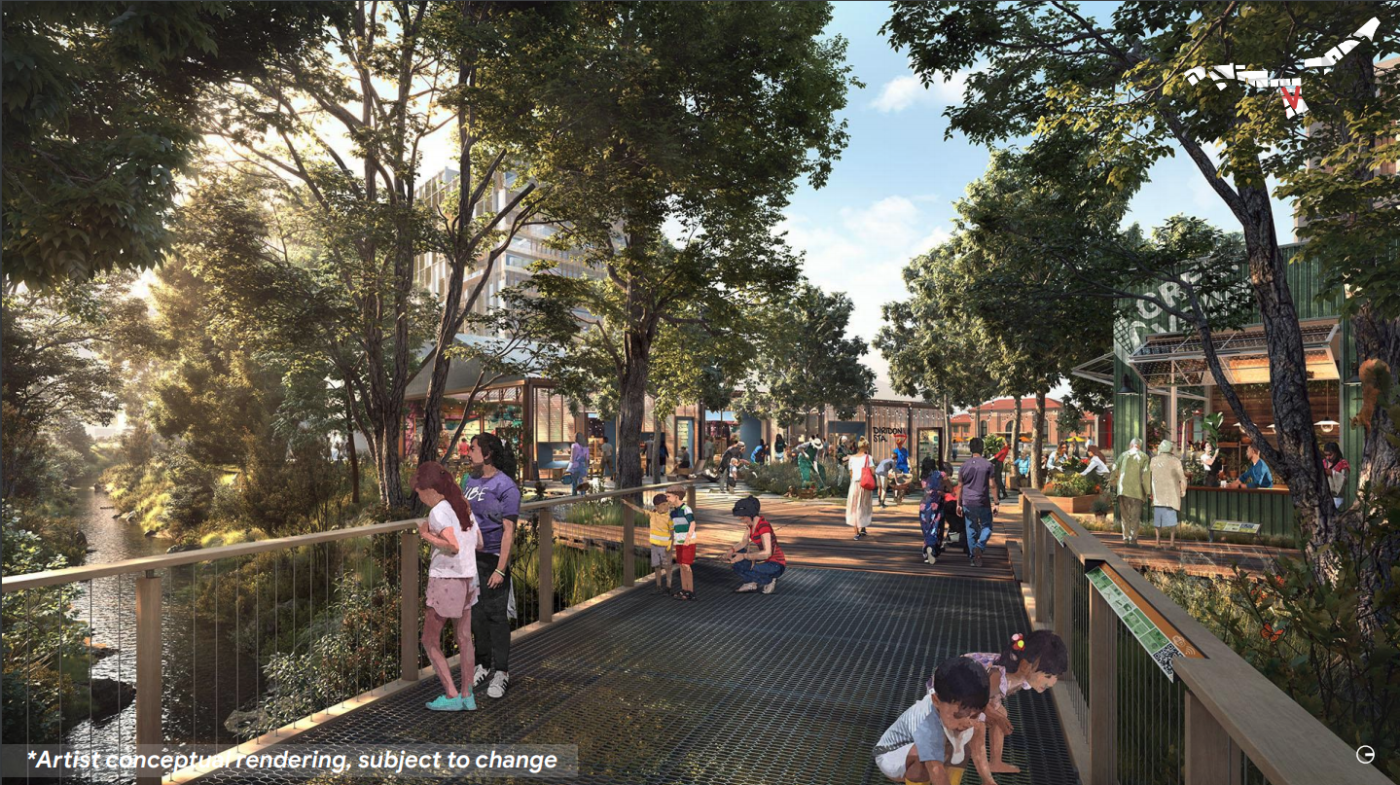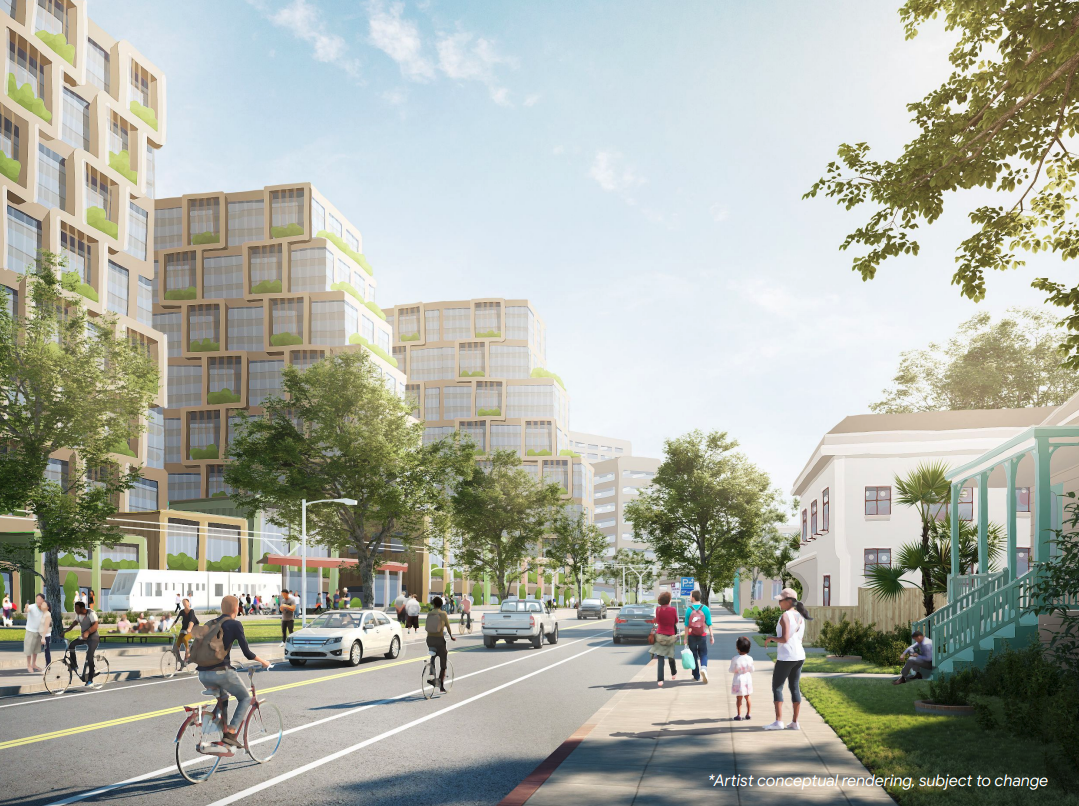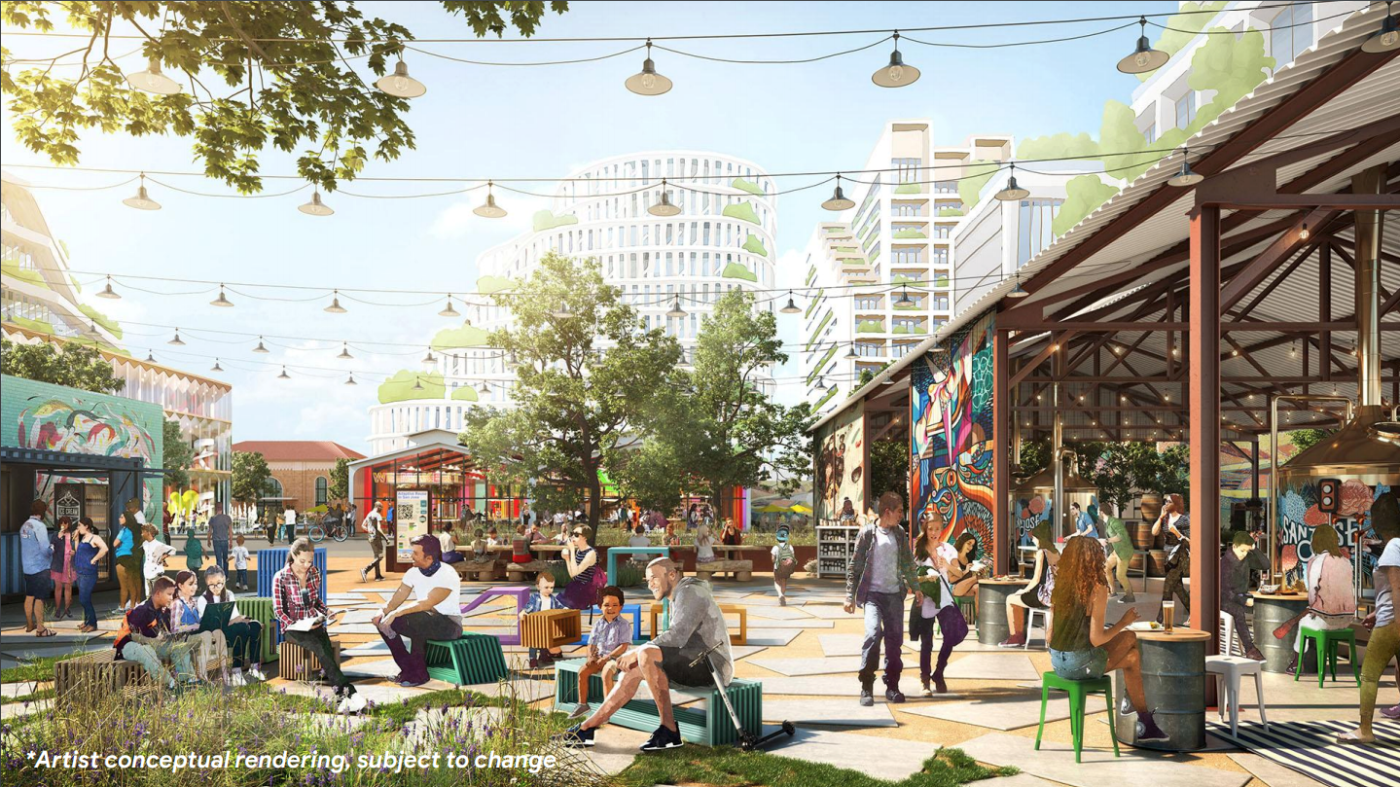“We hope this action serves as a catalyst for housing development in the 240-acre Diridon Station Area, which has the capacity to add up to 15,000 new homes,” Leslye Corsiglia, executive director for SV @ Home said of the proposal. Most local leaders, including affordable housing advocates have praised the agreement. On April 28th and May 25th, the San Jose Planning Commission and City Council respectively will vote on the future of the Diridon Station Area in Downtown San Jose. At stake are 15,000 new homes planned for in the Amended Diridon Station Area Plan, 25% of them affordable; Google’s Downtown West proposal including 4,000 new homes, 25% of them affordable (1,000 new deed-restricted affordable homes!), and a $154.8 Community Stabilization Fund; and The City’s Affordable Housing Implementation Plan providing guidelines for achieving affordable housing production, preservation of existing affordable homes, and protections for vulnerable residents at risk of displacement.
BY: Sonya Herrera┃San Jose Inside
PUBLISHED: April 26, 2021
Four years ago, San Jose officials gathered excitedly behind a portable podium in a parking lot near the iconic Stephen’s Meats “dancing pig” sign to say Google was mulling a massive campus in the Diridon Station area that would be a boon to the city.
Land sales, closed-door meetings and years of community feedback sessions followed, some interrupted by a persistent group of protesters carrying banners imploring city leaders to say no to Google.
Now, the company has offered a $200 million cherry to sweeten its proposal, known as Downtown West, which also includes hundreds of millions of dollars in infrastructure improvements, developer fees and other gifts. It’s an unprecedented proposal that won over many critics. Still, some say Google’s development agreement does not—and perhaps cannot—go far enough.
“You need economic development to uplift everybody, but it has to be cognizant of the existing conditions of the city,” says Lydon George, a graduate student in San Jose State University’s Urban Planning program. “This agreement, where they’re giving money to local groups … none of it is addressing the systemic issues of widening inequality in the city and in the region.”
The 495-page draft agreement between the City of San Jose and Google follows years of resident feedback to figure out how the company can mitigate the impacts of the proposal. On May 25, city council members are set to decide where the cost-benefit analysis lands with a vote on the project.
Most local leaders, including affordable housing advocates have praised the agreement. “We hope this action serves as a catalyst for housing development in the 240-acre Diridon Station Area, which has the capacity to add up to 15,000 new homes,” Leslye Corsiglia, executive director for SV @ Home said of the proposal.
But some residents remain worried. Jeffrey Buchanan, Working Partnerships’ public policy director, says their fears are understandable.
A 2019 study commissioned by the South Bay Labor Council-sponsored economic think tank Working Partnerships USA estimated the development would result in an average $735-per-month rent increase for existing San Jose residents by 2030. The organization worked extensively with the city and Google to craft an agreement to preserve working class housing. Once a vocal critic of Google in San Jose, Working Partnerships is now a supporter.
“Our work’s not done when it comes to addressing displacement within the development,” Buchanan says. “If we were able to get other developers to take the same kind of approach that Google’s taking, it would make a significant impact in terms of preventing displacement.”
Not all critics are swayed. Jon Gustafson, vice president and general manager of Sharks Sports and Entertainment, says the current proposal would be “devastating” for the Sharks arena at the SAP Center, even with the 2,850 parking spaces Google would preserve for event-goers through construction.
On Sunday, the organization sent a letter to supporters asking them to tell the San Jose Planning Commission—which will discuss the development agreement on April 28—that the team needs a minimum of 4,800 parking spots available on game days. It also urges council members to make more detailed plans to avoid future traffic jams and create new provisions in the document so the city has more control to address, or ask Google to address, future problems that arise during the development.
Short of that, the letter says, the Sharks are unwilling to relinquish to Google their rights to a trio of critical city-owned parking lots, known as the A,B and C lots, in the middle of the proposed development.
“Given our years-long effort to work collaboratively with the city and Google toward a transformative renewal of the Diridon Station area, we are disappointed that we cannot support the Downtown West project as currently planned,” the letter states. “However, the city should not allow this project to proceed at the cost of the arena’s future or the success of the Sharks franchise in San Jose.”

Unprecedented Figures
The most comparable offer to Google’s promised gifts in the state came in 2001, when developers pitched roughly $150 million in benefits to build a new entertainment district near Staples Center in Los Angeles.
And the overall benefits from Google’s project far exceed the company’s explicit offer. San Jose estimates the complete benefits—including Google’s plan to build or set aside land for 4,000 homes and infrastructure improvements—total roughly $1.25 billion.
But that grander figure may fall short of what’s needed to stop widespread displacement of low-income residents, some say. Other advocates wondered whether a benefits deal from 2001 offered by real estate developers is comparable to that offered by one of the richest companies in history in 2021.
Google provides the bulk of revenues to Alphabet, its parent company. Alphabet’s operating profit—its revenues minus the cost of goods and day-to-day business expenses—was $41 billion in 2020, or about $112 million per day.
The lawsuit settlements offered by the company in the last few years also rival the value of the project’s estimated benefits. Last year, Alphabet agreed to pay $310 million to resolve a shareholder lawsuit. In 2019, Google agreed to pay $170 million as a settlement for collecting personal information from children.
Sandy Perry, director of the Affordable Housing Network and well-known critic of the proposed Google campus, says there’s a lot to appreciate in the development agreement. That’s particularly true in a city like San Jose, where there are more homes than jobs, which puts downward pressure on the city’s budget. Even so, the new project may exacerbate inequality, Perry says, as lower income residents fall further behind their already higher income peers.
“City policy has a lot to do with it,” Perry says. “They’re trying to solve their fiscal problems by building the tax base, but there’s got to be a different way of doing that, because all this commercial development without enough housing is displacing their people and making them homeless.”
The Working Partnerships study said the city needs 5,284 affordable homes to offset the impact of the Google development on rents. Google has offered to build or provide land to the city for about 1,000 of those. The rest would be up to future developers who decide to build in the area.
City officials set a goal that 25% of the homes built around Diridon Station would be affordable, but there’s no guarantee how many will rise.
“If we need over 5,000 affordable units to sustainably break even on this development, and we will only get 2,000, that’s inadequate,” Perry says. “It’s not just San Jose, it’s not just Google, but they play a part in it.”

Mixed Feelings
Emanuel Jacobo, founder of transportation nonprofit CATLine SJ, says many of his peers are concerned about the growing homeless population and potential displacement.
“I don’t know how, with the information powerhouse that Google is, they don’t know the problems that we’re dealing with,” Jacobo says. “They’re going to be employing 20,000 people that also need a place to stay.”
When asked whether the agreement adequately addresses the impacts on the working class in San Jose, Google reiterated its most widely reported aspects: 4,000 homes in the campus area, most of which would likely be built by Google’s development partner Lendlease; the dedication of four areas of land for affordable homes; and a $154.8 million community fund that would issue grants to local groups.
George says he’s still wary about gentrification. He’s looked at local displacement trends as a part of his graduate studies, and says some of the areas experiencing the most—including the Horseshoe area, the Gardner area and East San Jose—are perilously close to the proposed Google project.
“It’s not [just] Google tearing down a building and putting something else instead,” George says. “It’s putting intense economic pressure on these areas to essentially force people out.”
Advocates like George say it’s critical to not make San Jose’s problems worse. But it’s also not clear how much responsibility Google alone should carry for issues that plagued the region long before the tech giant started buying land for its massive proposed San Jose campus. The Bay Area’s biggest problems are larger than Google, and represent a reckoning with inequality that communities across the U.S. are facing, Perry says.
“These corporations just want to become more wealthy, and they don’t want to take responsibility for the conditions in their communities,” Perry says. “Corporations could end poverty in America before they eat breakfast … and they would barely even notice it.”
